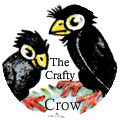Making Goat Milk Soap
 Paul and I turned his shop into a soap factory today. We've been preparing for making soap for ages. We have had the equipment and the lye for months and months. The book we used for a how-to said to allow three hours for your first batch, so we kept putting it off. It's not always easy to find three hours of time when you don't have to worry about kids. Finally we just decided to let Ivy babysit while we ran between the house and shop to check occasionally. But when it came to it, it didn't take anywhere near three hours! Even with setup and cleanup. It wasn't terribly hard or scary or anything like that. We felt terribly accomplished when it seemed to come together like it should, but now the next six weeks or so that the soap has to cure is really stretching out in front of us...
Paul and I turned his shop into a soap factory today. We've been preparing for making soap for ages. We have had the equipment and the lye for months and months. The book we used for a how-to said to allow three hours for your first batch, so we kept putting it off. It's not always easy to find three hours of time when you don't have to worry about kids. Finally we just decided to let Ivy babysit while we ran between the house and shop to check occasionally. But when it came to it, it didn't take anywhere near three hours! Even with setup and cleanup. It wasn't terribly hard or scary or anything like that. We felt terribly accomplished when it seemed to come together like it should, but now the next six weeks or so that the soap has to cure is really stretching out in front of us...First, you have to melt your fats. We used shortening, canola oil, safflower oil, and olive oil. The shortening is obviously the only oil that needs to be melted since the others are already liquid at room temperature. So you melt the shortening and add the other oils and leave them sitting while you move to the next step which is adding the lye to the milk. You have to put the milk in a cold water bath in the sink and add the lye very slowly so it doesn't heat the milk too rapidly and scorch it. The book recommends taking 15 minutes to add 12 ounces of lye to the milk. Paul added the lye while I stirred.
 Then you heat the oils up slightly again and add a little sugar, glycerin, and Borax and get all that stirred up. The lye/milk mixture gets added to the oils now and the stirring begins. And the stirring continues and continues and continues until you blow the breaker, and your stick blender explodes in your hand. Actually, that part was just a little something we added for a little extra excitement that wasn't in the book. Thankfully, it conked out right as the mixture came to trace. We're hoping it doesn't cost us a blender every time we make a batch of soap.
Then you heat the oils up slightly again and add a little sugar, glycerin, and Borax and get all that stirred up. The lye/milk mixture gets added to the oils now and the stirring begins. And the stirring continues and continues and continues until you blow the breaker, and your stick blender explodes in your hand. Actually, that part was just a little something we added for a little extra excitement that wasn't in the book. Thankfully, it conked out right as the mixture came to trace. We're hoping it doesn't cost us a blender every time we make a batch of soap. After the mixture has come to trace and looks about like this, you put it into your molds and then leave it for about 24 hours. Then you unmold it and cut it into bars while it is still soft enough to slice up easily, but hard enough to hold its shape. Then you can begin your waiting in earnest as it takes about 4-6 weeks for it to mellow out and cure so it can be used.
After the mixture has come to trace and looks about like this, you put it into your molds and then leave it for about 24 hours. Then you unmold it and cut it into bars while it is still soft enough to slice up easily, but hard enough to hold its shape. Then you can begin your waiting in earnest as it takes about 4-6 weeks for it to mellow out and cure so it can be used.
We used a square mold that cuts into eight bars and says Goat's Milk on the bars and a long piece of plastic that comes packaged with new windows for the molds.
As it takes such a long time for the soap to cure, we're looking into doing a batch of hot process soap which follows the same basic process as cold process, but is cooked before molding and is ready to use in just a couple days. Better for when you're eager to test your new creations!

As it takes such a long time for the soap to cure, we're looking into doing a batch of hot process soap which follows the same basic process as cold process, but is cooked before molding and is ready to use in just a couple days. Better for when you're eager to test your new creations!

















1 comments:
Jenny,
I learned a trick on a forum; freeze your milk in batch sizes. Thaw it to slush and add the lye to the slush. It solves the burning problem
Post a Comment